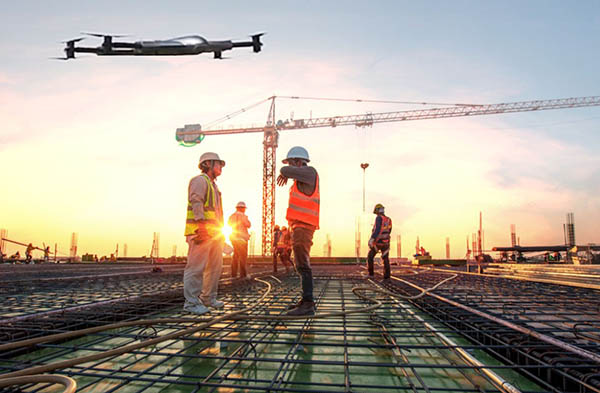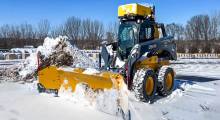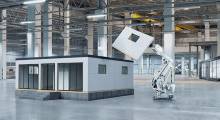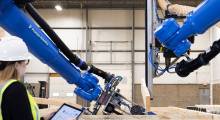Construction sites are perilous places, but new technologies including aerial drones and artificial intelligence have emerged that can improve safety, quality, and productivity.
In 2020, nearly 175,000 construction workers reported job-related injuries, according to the Bureau of Labor Statistics (download PDF). In 2019, more than 1,000 construction accidents resulted in death, accounting for 20% of all work-related deaths in the U.S., said the Occupational Safety and Health Administration (OSHA).
The financial costs of such injuries to the construction industry total more than $170 billion annually, noted the National Safety Council.
As the construction industry seeks to improve safety, many are turning to the cutting-edge technology offered by drones. When the durability and flexibility of drones is combined with the latest sensors, AI, and machine learning, they provide a tool that empowers construction companies to detect and address hazards with greater speed and efficiency.
The top hazards on construction sites
Based on workplace accidents reported to the U.S. Department of Labor, OSHA has developed a list of the top four causes of construction site fatalities. “The Fatal Four” includes falls, electrocutions, incidents in which someone is struck by materials or equipment, and events in which someone is caught in or between some elements of the job site (download PDF).
With each of these causes, OSHA recommends a range of protective systems designed to alert workers to dangers and reduce the chance of injuries. To ensure that such systems are in place, operational, and respected by workers, construction companies can leverage the tools that drone technology provides.
The top applications for drone tech
In general, drones enable their users to overcome the barriers that make accessing locations dangerous, difficult, or resource-intensive. They are affordable and can be operated without extensive training.
Thanks to the latest advances in technology and offerings such as drones as a system (DaaS), data collection can be conducted as needed, and a wide variety of inspection tasks can be automated.
In the construction industry, drones can inspect large sites from the air, record data with high-resolution cameras, and process and report that data back to supervisors. Uncrewed aerial vehicles (UAVs) can avoid the dangers to human inspectors posed by heights, heavy equipment, and infrastructure such as electrical and drainage systems.
Drones with thermal imaging capabilities can also be suitable for ongoing monitoring of worker activity on construction sites. Should workers be found in areas designated as unsafe, that information can be relayed quickly to managers on site.
As a result, drones offer to remove workers, not from the construction site entirely, but from the highest-risk areas. Operators on site or at remote locations can evaluate site security and assess stockpiles, freeing workers for other, less-hazardous tasks.
How AI increases drone efficiency
The power of AI lies in enabling machines to make decisions without direct human involvement. Machine learning allows robots and drones to interpret the data they collect, improving over time, and helping users to make informed decisions.
When it comes to construction, drones can use AI and machine learning to increase the speed with which hazards are detected and addressed.
For example, UAVs equipped with thermal scanners can identify areas where temperatures are higher. When site managers access that data, they can use it to identify when workers are in dangerous locations. However, by the time the assessment is made, it may be too late to avoid an injury.
With AI, drones can learn to interpret the data that they are gathering via thermal scanners, identifying people and assessing whether any of them is in a danger zone. As a result, UAVs can alert managers, sounding the alarm in a timely manner that is more likely to avoid a potential injury.
In the same way, drones can use AI to learn what constitutes a safe job site. When routine inspections reveal conditions that are out of the ordinary, systems can quickly flag them as a hazard, allowing those on site to respond.
While construction sites will always pose dangers to workers, technology can improve workplace safety. Drones, especially when combined with AI technology, can serve as a powerful tool for achieving those improvements and, consequently, saving human lives.

About the author
Dr. Shaun Passley holds numerous masters degrees from DePaul University, Benedictine University, and Northwestern University, and he has a Ph.D. in business administration. In addition to founding ZenaTech, Passley is chairman and CEO of Epazz Inc. — an enterprise-wide cloud software company — as well as of manufacturing company Ameritek Ventures. ZenaDrone Inc. is an entirely bootstrapped venture that is aiming to help the agricultural sector in Ireland close its emerging labor gap through automation.
Article topics
Email Sign Up
















